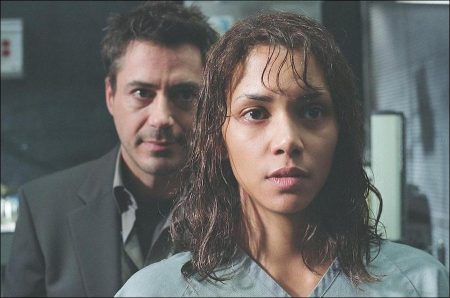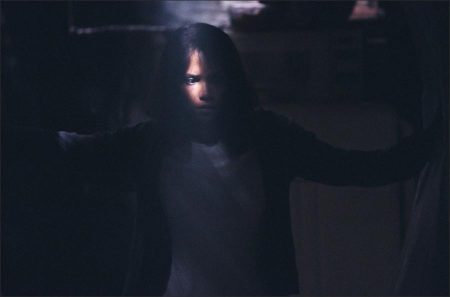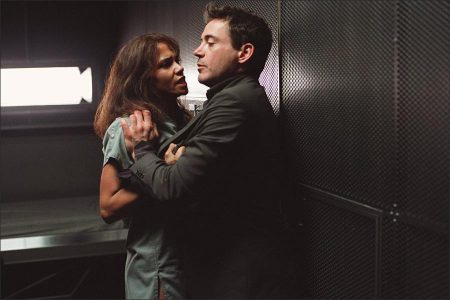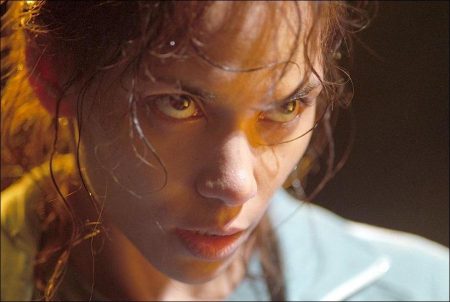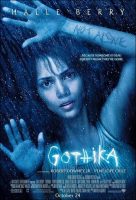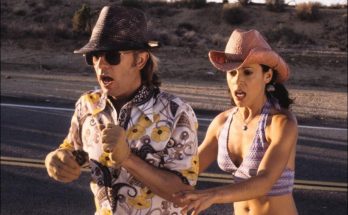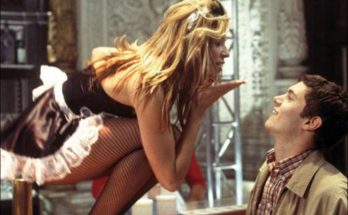Gothic: 1. of or relating to an architectural style reflecting the influence of the medieval Gothic; 2. of or relating to a style of fiction characterized by the use of desolate or remote settings and macabre, mysterious or violent incidents. Developed in northern France and amplified through Western Europe from the middle of the 12th century to the early 16th century, Gothic architecture reflects the savagely dramatic style of the medieval arts and is characterized by the evocative fusion of flying buttresses, pointed arches, vertical piers and vaulted ceilings.
In the late 1700s, the Gothic literary tradition emerged from England’s changing social climate. Class riots within the country and a revolution in America sent a current of uncertainty coursing through a society already divided by conflicting ideas about the supernatural, as traditional religious and superstitious beliefs clashed with the rational principles of the Enlightenment. The burgeoning Gothic narrative – a remarkably popular hybrid of mystery, horror and desolation – dominated English literature in the late 18th and early 19th centuries, the most renowned and influential work being Mary Shelley’s Frankenstein, published in 1818. This “new and fearful genre for a new and fearful time” served as the forerunner to the modern mystery novel.
The Gothic tradition of violent change enveloped in mystery and steeped in moody atmosphere is re-imagined for the 21st century in Gothika, the chilling tale of Miranda Grey, a brilliant psychiatrist who experiences an unwelcome awakening when she is accused of a committing heinous murder she cannot remember. Unable to fathom having committed an unmotivated act of such sheer brutality against a husband she loved and admired, Miranda is shocked to find herself incarcerated at the Woodward Penitentiary for Women, alongside the criminally insane patients she once treated.
“Gothika is a supernatural thriller that works on multiple levels,” says producer Joel Silver, who launched Dark Castle Entertainment with partner Robert Zemeckis in 1999 with the number one Halloween release House on Haunted Hill. “It’s smart, it’s scary, it’s a mystery, it’s an intense character piece, and of course, because it’s a Dark Castle picture, it’s a terrific ghost story.”
The idea for Gothika came to Dark Castle, purveyors of the hit horror films Thir13en Ghosts and Ghost Ship, from an original pitch by screenwriter Sebastian Gutierrez (Judas Kiss). “I remember sitting there listening to Sebastian tell me this gripping, atmospheric story and I was totally captivated,” recalls Silver Pictures Executive V.P. of Production Susan Levin, who oversees development of Dark Castle projects and produced Gothika with Silver and Zemeckis. “Gothika taps into a fear that we all have – being told that you did something terrible that you have no memory of doing. And it keeps you guessing at every stage. Is it all happening in Miranda’s mind? Is it a conspiracy? Or is she being manipulated by a supernatural force?”
After honing the story with Levin and Silver, Gutierrez delivered a chillingly suspenseful character-driven screenplay about a respected criminal psychologist battling for her sanity and freedom as she is thrust into circumstances beyond her control. “One of the things that distinguishes Gothika from your typical horror movie is the character of Miranda Grey,” Silver says. “She’s a smart, sensible woman with a comfortable marriage and a very stable life. And then in a very traumatic way, her freedom is stripped away, and everything she says is called into question. Her colleagues and her patients have never seen her lose her composure, let alone act as erratically as she does following the murder of her husband. She’s forced to go from being someone who trusts only logic to having to trust her instincts.”
Suddenly Miranda finds herself “on the other side of the glass,” confined with the highly irrational patients she used to treat with methodical detachment. Meanwhile, she is subject to mind-numbing medication and the palpable mistrust of her former colleagues while she desperately tries to discover the truth behind her husband’s brutal murder in order to prove her innocence…or accept the consequences of her inexplicable actions.
“There’s a great line in the movie where Miranda says I don’t believe in ghosts but they believe in me,” Silver reveals. “As she tries to make sense of her disturbing encounters with a vengeful spirit, Miranda begins to believe that maybe the patients who say they hear voices really do hear voices.”
Silver envisioned Academy Award-winning actress Halle Berry in the physically and emotionally demanding role of Miranda. “Besides being gifted and beautiful, Halle brings depth and emotional range to every character she plays, and I knew she could really shine as Miranda,” says Silver, who cast Berry in one of her first film roles, opposite Bruce Willis and Damon Wayans in The Last Boy Scout, and reunited with her on the hit action thrillers Executive Decision and Swordfish. “This character takes an incredible journey, and Halle has the talent and stamina to take Miranda to some very dark places along the way.”
“When Joel sent me the script, it jumped off the page for me,” says Berry, the 2002 Best Actress Oscar winner for her tour de force performance in Monsters Ball. “Miranda is so compelling – she’s complicated, intelligent and caught a truly terrifying situation. From the first page, I was immersed in Miranda’s journey of self-discovery, and I loved it.”
Berry describes Miranda as “a tortured soul” who discovers the depth of her strength and intuitive skills when she is stripped of her identity. “At the beginning of the story, she’s living life by the numbers rather than living life to the fullest,” says the actress, whose mother worked as a nurse in a psychiatric ward for 35 years. “The journey that Miranda takes throughout the movie inspires her to wake up and take a look at what’s around her, and she starts living in a more visceral way than she has ever lived before.”
Although Miranda’s painful transition from judicious doctor to seemingly self-destructive mental patient is specific to her extreme circumstances, Berry believes her character’s predicament is one audiences can identify with. “Miranda is not alone,” she cautions. “Any one of us could be in the same position that she finds herself in. Things are going along just beautifully and, in a single night, the course of your life is changed forever.
“This movie is all about the What if?” Berry elaborates. “What if this happened to you? What would you do? How would you find your way out? Could you find your way out? Would you give up, would you survive or would you die trying?”
To guide Berry though Miranda’s torturous journey and balance Gothika’s sophisticated hybrid of suspense, drama and terror, Silver tapped acclaimed French actor-director Mathieu Kassovitz, who won the Palme d’Or for Best Director at the 1995 Cannes Film Festival for La Haine (Hate), his incendiary drama of life in the housing projects surrounding Paris.
After screening Kassovitz’s 2002 action thriller The Crimson Rivers, Silver asked Levin to set up a meeting with the young auteur in Paris. “It’s very rare for Joel to sit down with a young filmmaker, especially if he doesn’t have a specific project in mind,” Levin acknowledges. “It has to be someone he really sees potential in and wants to work with. Like Joel, Mathieu has an incredible love and knowledge of movies. They connected and decided to find something to do together.”
“I wanted to get a very special director for this picture, and Mathieu is very passionate and talented,” Silver says. “He really knows how to create a mood, how to tell a story. When I sent him the Gothika script, he immediately responded to the material and had a vision of what he wanted this movie to be.”
“Sebastian’s script is really well-written, smarter than average, and very scary,” enthuses Kassovitz, the son of auteur Peter Kassovitz (Jakob the Liar). “The characters are not just bait for a crazed killer. They are intelligent, coherent, interesting people. When Joel told me that Halle Berry was going to play Miranda, it blew my mind. An actress of her caliber takes this material to another level, and it was up to the rest of us to rise to the occasion.”
Kassovitz and Silver cast charismatic Oscar-nominated actor Robert Downey Jr. in the role of Dr. Pete Graham, Miranda’s sympathetic but skeptical coworker who is wrestling with issues of his own. “Pete has this unrequited love for Miranda,” Downey explains, “but he knows he can’t go there because not only is she a colleague, but her husband is their boss.”
Miranda struggles to convince Pete of her sanity as her behavior becomes increasingly erratic. Says Silver, who Downey jokingly credits as his “first boss outside the restaurant business” for casting him in the 1985 hit John Hughes comedy Weird Science: “Pete really wants to help Miranda, he really wants to believe her, but every step of the way she does things that he just can’t justify. He can’t trust her, he can’t keep supporting her. And it really strains how he feels about her, both personally and professionally.”
“Miranda goes from having this unspoken connection with Pete to wondering if she can trust him,” Berry adds. “It’s difficult for her or the audience to know if he’s a good guy or a bad guy.”
“Robert is smart and he has amazing charisma,” notes Kassovitz. “At the same time, there is an edge to his personality that he put into the character, and you can really feel it in the film.”
As Miranda attempts to decipher her cryptic encounters with the ghost of a mysterious teenage girl, she finds herself becoming increasingly sympathetic to a patient she had previously dismissed as psychotically delusional. The filmmakers offered internationally acclaimed actress Penélope Cruz the role of Miranda’s dangerously disturbed patient Chloe Sava, an opportunity Cruz says she “simply couldn’t resist. This is just the kind of material I look for – something that I haven’t done before and represents a risk for me as an actor.
“Chloe lives in her own hell, one that is very real to her, but nobody believes what she has to say, including Miranda,” continues Cruz, the superstar of Spanish cinema who is best known to American audiences for her impressive performances in Vanilla Sky and Blow. “That’s my worst nightmare, to be in a situation where you’re telling the truth but everyone thinks you’re crazy. It is so horrible when people don’t believe that your pain is real.”
Like Cruz, Kassovitz doesn’t believe that Chloe is actually crazy. “People who say they hear voices – it’s not that there’s something wrong with them; it’s just that they see things that we don’t,” he suggests. “You would be paranoid too if nobody believed what you were saying was the truth.”
As Gothika unfolds, Chloe is powerless against Miranda and the psych ward staff, who dismiss her claims of satanic torture as psychotic meanderings. But when her mistrustful doctor becomes an inmate herself, the hauntingly charismatic Chloe gradually draws Miranda into her own personal hell. “Chloe is a really colorful character, and Penélope goes for it,” Silver says. “This movie gives American audiences the chance to see her in a way we never have before.”
“Penélope only had a few scenes to bring this character alive,” adds Kassovitz, “and she discovered what Chloe was all about in just six days on set. She put everything she had into this role, and she’s really remarkable in it.”
“Chloe is the most intense character I’ve ever had to play,” Cruz admits. “I would end up crying every day, thinking about how someone could be in a situation like hers. There were times when I just didn’t want to go there. It brought too much pain. This kind of material is very attractive for an actor, but it also hurts.”
Emmy-winning actor-director Charles S. Dutton (Against the Ropes, TV’s Roc) plays Dr. Douglas S. Grey, Miranda’s husband and chief administrator of the Woodward psychiatric hospital. “Doug Grey is highly respected in his field, a powerful presence who conveys a deep concern and sympathy for his patients,” Dutton says. “He’s the envy of a lot of men in his profession to have wed this younger, beautiful, promising doctor. He genuinely appreciates the fact that Miranda loves him, but at the same time, he treats her a bit like a prize, like his toy. There’s a sense that Miranda longs for a deeper connection with him.”
Completing the Gothika main cast are John Carroll Lynch (The Good Girl) as Sheriff Bob Ryan, who leads the investigation into the murder of his best friend, Dr. Doug Grey; and Bernard Hill (The Lord of the Rings: The Two Towers) as Miranda’s colleague Dr. Phil Parsons, whose unexpected connection to her alleged supernatural encounters helps to unlock the mystery behind her self-destructive behavior.
“Gothika is a popcorn movie with real substance, and I want people to come into the theater ready to be scared,” enthuses Kassovitz. “We’re going to give them a really suspenseful, scary ride and not let up until it’s over.”
Rife with suspense and rich with disquieting atmosphere, Gothika is fortified by an evocative production design that portends the cruel twist of fate awaiting Dr. Miranda Grey – especially in the sets depicting the Woodward Penitentiary, the bleak, oppressive institution where she is incarcerated alongside her former patients.
The primary location for Woodward was the sprawling turn-of-the-century St. Vincent-de-Paul Prison, a now-abandoned maximum security facility in Laval, Quebec, located about an hour northwest of Montreal. The filmmakers had originally intended to build the penitentiary sets on stages, but augmented the design scheme after director Mathieu Kassovitz fell in love with the dark, decaying facility, commonly known as “the SVP.” Several scenes in the script were expanded so that the production could utilize more areas of the SVP to make Woodward an even greater presence in the story.
“When we were scouting locations during pre-production, we came upon the SVP and immediately knew that it was the place,” says producer Susan Levin. “The ominous mood and tone of this movie are perfectly personified by that prison.”
Production designer Graham “Grace” Walker and his art department transformed numerous settings within the visually rich SVP, including its maze of hallways and stairwells, the rusted, paint-peeling cell blocks, the three-story atrium-like Common Room, and the exercise yard where Chloe warns Miranda of impending danger.
Walker’s team also constructed a number of the Woodward sets at Montreal’s Cite du Cinema stage facility: the administration offices, the communal shower room and the glass-fronted observation cells, which were constructed from tiles and perforated stainless steel. “The biggest challenge in designing this film was maintaining a consistent look while we were integrating so many different locations and stage sets,” Walker says. “It all came together because of my fantastic team in Montreal. They’re exceptionally talented artisans, and they created a really visceral environment for this film.”
“The locations and sets we shot in couldn’t be more fitting for this movie,” Berry attests. “They are very specific and really set the tone for the actors.”
“Grace took inspiration from the actual prison and expanded on the gothic concept brilliantly,” says Silver of Walker’s meticulous eye to detail. “Together with Mathieu and our director of photography, Matthew Libatique, Grace made the Woodward Penitentiary a character in the film.”
Director Kassovitz credits the film’s sinister ambience to his collaboration with Walker, Libatique, and costume designer Kym Barrett. “What was most important to me was that the elements had to work together to make very stylized yet realistic environments that have both substance and meaning,” he explains. “That meant that the sets and the lighting couldn’t just be moody during the scariest parts, they had to be moody and eerie and scary the whole time. I never want the audience to escape that dark feeling; the mood must never be broken.”
To realize director Kassovitz’s vision, Walker developed a distinctive color palette. “I tried to create a foreboding sense with muted colors, grays and browns and fairly non-colored tones I’d never used before,” says Walker, who previously designed the films Ghost Ship, Queen of the Damned and The Island of Dr. Moreau.
Walker and Kassovitz worked closely with cinematographer Matthew Libatique, who won the 2001 Independent Spirit Award for his haunting cinematography in Requiem for a Dream, to establish Gothika’s eerily striking mood and inventive shooting style. “I wanted the camera to be like a ghost, going places where it physically shouldn’t be able to go,” Kassovitz explains. “We also had some complicated sets, particularly the glass cell walls, which are difficult to shoot because of reflections. Matty and I knew we wanted that grainy, edgy feel and it sort of became a cross between stylized glamorous noir and down and dirty guerrilla-style filmmaking.”
“Mathieu really knows how to move the camera to bring you into Miranda’s journey,” Silver observes. “There are many scenes in which it’s just two characters talking in a cell, and that’s a real challenge for a director. Mathieu made each one of them interesting and unique. There are also a number of scenes where Miranda is trying to figure out if she’s sane or going mad, and Halle had to react with almost nothing around her. That speaks to her strength as an actress, but also to Mathieu’s talent as a director. He keeps the audience invested and involved in the movie with her.”
Berry, who has worked with such diverse directors as Warren Beatty, Martha Coolidge, Lee Tamahori, Tony Scott and Spike Lee, says her collaboration with Kassovitz yielded the textured, compelling performances and tone they envisioned. “Mathieu has a great eye and a really unique, edgy way of telling a story with the camera. And as an actor himself, he understands and appreciates the craft of acting. He has a very independent style to his filmmaking and I think that helps to make this movie is so unique and special.”
“Mathieu was terrific because from the first day we literally worked together,” says Robert Downey Jr. “He helped me to make playing Pete effortless. It wasn’t easy, but it was effortless. Right before we started shooting I had this more conservative look, and Mathieu walked over, messed up my hair, took off his t-shirt and put it on me and said ‘Pete’s gotta be more cool.’ That comforted me, because often I’m ready to be more conservative or unlike myself in a role, but Mathieu didn’t want that. He said ‘No, Pete should be more like you.'”
“Acting is such a difficult, intimate process,” Kassovitz notes. “As an actor myself, I feel like I’m able to communicate especially well with my cast. But I prefer directing; it’s more interesting for me.”
Because Berry appears in nearly every scene of the film, production went on hiatus for one month after the actress injured her wrist while shooting a scene with Downey. “Gothika is a testament to Halle’s strength and talent,” Silver attests. “She’s a terrific actress with tremendous emotional range and incredible energy.”
“I loved working with Halle,” Cruz reports. “From day one I connected with her. She made me feel so comfortable. She’s a very real woman who is smart and funny and honest.”
“It was wonderful watching Halle work in this film, having seen her evolution as an actress,” says Charles Dutton, who has known Berry for many years but had never worked with her prior to Gothika. “She’s an extremely intelligent actress; she’s fearless and she’s daring. She’s a real pro.”
As exhaustive as was the process of playing Miranda’s tumultuous journey, “I’m really proud to be a part of Gothika,” Berry enthuses. “There are some scenes in the film that scared me while we were shooting, and I already knew what was going to happen! So if audiences leave the theater feeling like, ‘Wow, that scared the heck out of me,’ then I think we’ve done our job.”
Gothika (2003)
Directed by: Mathieu Kassovitz
Starring: Halle Berry, Robert Downey, Penélope Cruz, Charles S. Dutton, John Carroll Lynch, Bernard Hill, Kathleen Mackey, Amy Sloan, Anana Rydvald, Laura Mitchell
Screenplay by: Sebastian Gutierrez
Production Design by: Graham ‘Grace’ Walker
Cinematography by: Matthew Libatique
Film Editing by: Yannick Kergoat
Costume Design by: Kym Barrett
Set Decoration by: Marie-Claude Gosselin
Music by: John Ottman
MPAA Rating: R for violence, brief language, nudity.
Distributed by: Warner Bros. Pictures
Release Date: November 21, 2003
Visits: 150
